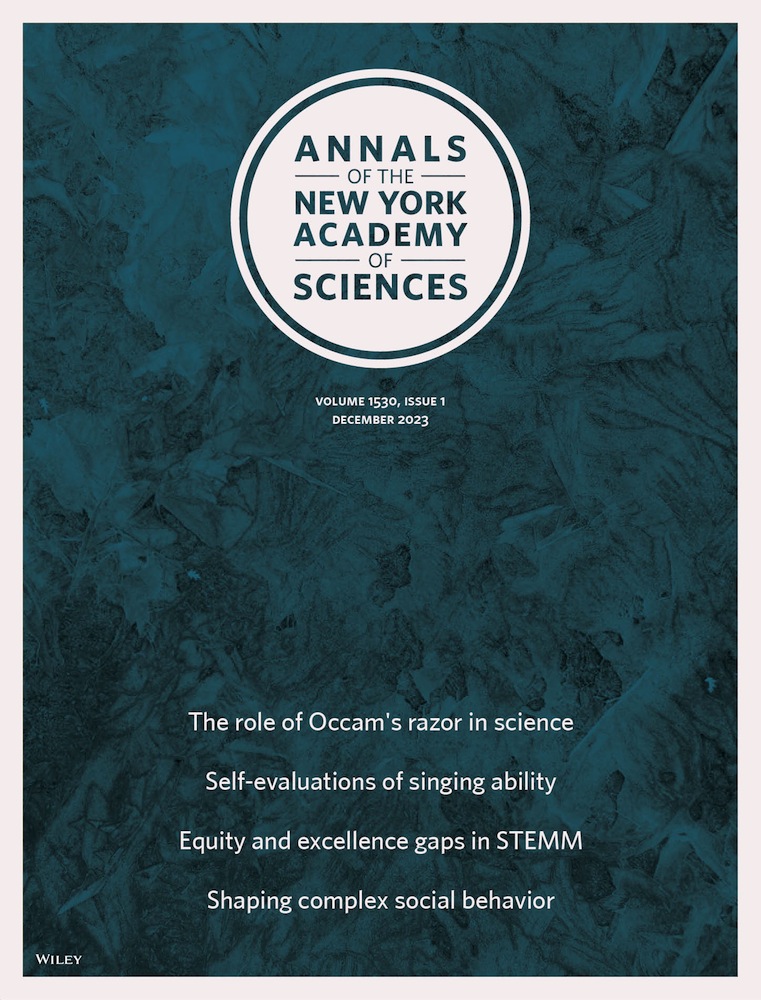Neural pathways underlying the production of pitch and rhythm in aphasia.
IF 4.1
3区 综合性期刊
Q1 MULTIDISCIPLINARY SCIENCES
引用次数: 0
Abstract
Singing is a universal human attribute. Previous studies suggest that the ability to produce words through singing can be preserved in poststroke aphasia (PSA) and that this is mainly subserved by the spared parts of the left-lateralized language network. However, it remains unclear to what extent the production of rhythmic-melodic acoustic patterns in singing remains preserved in aphasia and which neural networks and hemisphere(s) are involved in this. In this cross-sectional study, we set out to investigate the structural neural networks underpinning singing production abilities by combining a whole-brain white matter correlational tractography approach together with a comprehensive appraisal of pitch, melodic contour, and rhythm production accuracy during both spontaneous and cued singing in a sample of 45 patients with PSA. Our results indicate that PSA patients have poorer singing accuracy (pitch, melodic contour, and rhythm) than matched healthy controls (N = 33). The network associated with singing accuracy in aphasia was identified in the left hemisphere-dominant dual stream network involved in auditory-motor integration of speech, but also extends to multiple other associative and projection pathways, also in the right hemisphere. The results provide insight into alternative communication methods and therapeutic approaches, leveraging music's inherent structure to aid in language recovery and rehabilitation.失语症中产生音高和节奏的神经通路。
歌唱是人类的普遍属性。先前的研究表明,通过唱歌产生单词的能力可以在中风后失语症(PSA)中保留下来,这主要是由左侧语言网络的备用部分提供的。然而,目前尚不清楚的是,失语症患者在多大程度上保留了唱歌时产生的节奏-旋律声学模式,以及哪些神经网络和大脑半球参与了这一过程。在这项横断面研究中,我们开始研究支撑唱歌能力的结构神经网络,通过结合全脑白质相关神经束造影方法,以及对45名PSA患者自发和暗示唱歌期间的音调、旋律轮廓和节奏产生准确性的综合评估。我们的研究结果表明,PSA患者的歌唱准确性(音高、旋律轮廓和节奏)低于匹配的健康对照组(N = 33)。失语症中与歌唱准确性相关的网络是在左半球主导的双流网络中发现的,该双流网络涉及言语的听觉-运动整合,但也延伸到右半球的多个其他联想和投射通路。研究结果提供了新的交流方法和治疗方法,利用音乐的内在结构来帮助语言恢复和康复。
本文章由计算机程序翻译,如有差异,请以英文原文为准。
求助全文
约1分钟内获得全文
求助全文
来源期刊

Annals of the New York Academy of Sciences
综合性期刊-综合性期刊
CiteScore
11.00
自引率
1.90%
发文量
193
审稿时长
2-4 weeks
期刊介绍:
Published on behalf of the New York Academy of Sciences, Annals of the New York Academy of Sciences provides multidisciplinary perspectives on research of current scientific interest with far-reaching implications for the wider scientific community and society at large. Each special issue assembles the best thinking of key contributors to a field of investigation at a time when emerging developments offer the promise of new insight. Individually themed, Annals special issues stimulate new ways to think about science by providing a neutral forum for discourse—within and across many institutions and fields.
 求助内容:
求助内容: 应助结果提醒方式:
应助结果提醒方式:


